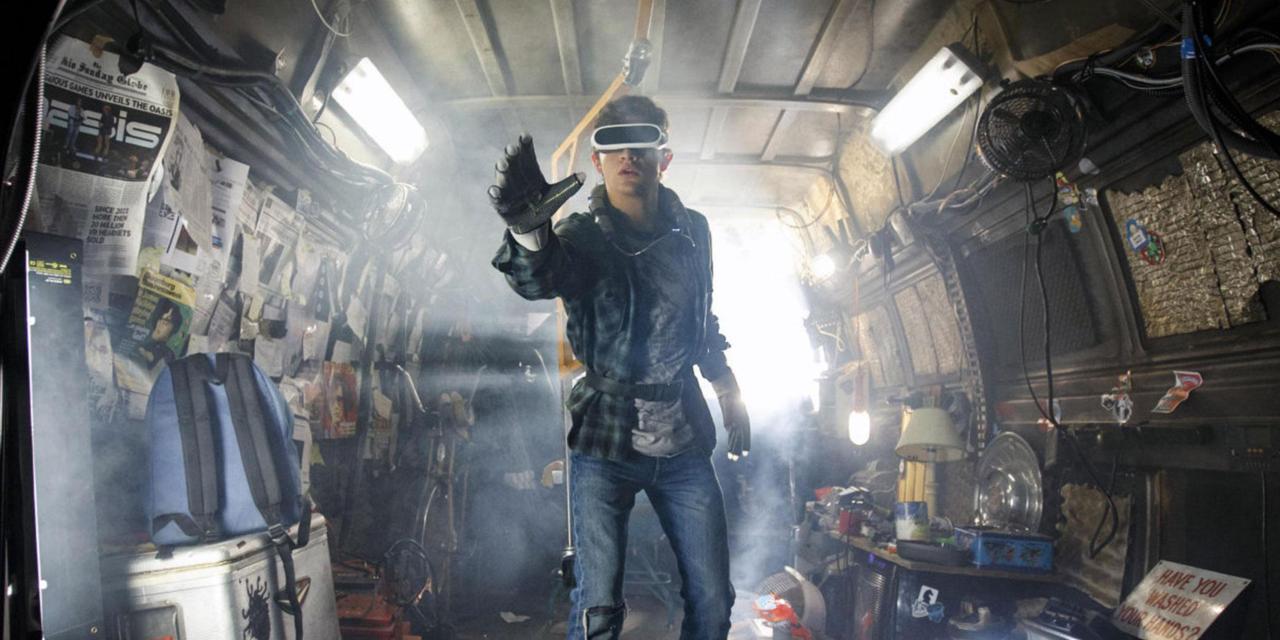The wish fulfillment fantasy of Ready Player One, Steven Spielberg’s adaptation of the novel by Ernest Cline, marks the closest a film has yet come to reproducing the pleasant narcotic buzz of playing a video game.
I can practically feel my fingers twitching during the first extended action scene, a computer-generated race exhilarating in its beautifully orchestrated chaos, the pop culture signifiers (King Kong! Back to the Future!) piling up alongside the bloodless car wrecks and one-liners. In the hands of a director as overwhelmingly capable as Spielberg, letting his hair down and embracing a mandate to create spectacle after making a series of more buttoned-up awards season contenders, I don’t even mind that I’m not holding the controller. This looks amazing. This is easy, and fun, and as long as the coins keep spilling from vanquished baddies, I feel like I’m in charge. It’s a good feeling.
But then, like an alcoholic snapping out of a blackout, the lights come up, the characters I’ve met over the last few hours already begin to fade from memory, my head starts to hurt, and a creeping sense of shame replaces the euphoria I felt earlier. I am not in control at all. Where the hell are my phone and keys?
Ready Player One unfolds from the perspective of Wade Watts, played by Tye Sheridan, who, just to finally beat this video game metaphor to death, is less charismatic here than most non-playable RPG characters. Through Wade, we’re introduced to the dystopian state of things in Columbus, Ohio, circa 2040-something, when unspecified ecological and political disasters have led a depressed population to spend much of its time escaping into the full entertainment immersion of The Oasis, a virtual world where you can be who you want to be.
And in this world, who most people want to be are characters from intellectual properties owned by massive corporations. Like the novel it’s based on, Ready Player One is shamelessly referential to other pop culture artifacts, especially those enjoyed by white men who grew up in the 1980s. Being a fan of film and video game franchises from that decade is depicted as an almost heroic act. In the novel, this feels like pandering to an audience that doesn’t need the flattery. That perception is not helped by the fact that Ernest Cline’s writing can be obnoxiously self-satisfied, or by the idea (fair or not) that it glorifies a sense of wounded nerd entitlement embodied at its worst by the sorts of slur-dispensing trolls who harass women on the internet and turn frog cartoons into hate symbols.
Cline also co-wrote the script here, but that gleeful referentiality plays much better on screen than on the page, probably because Spielberg is a much better filmmaker than Cline is a novelist. Some people are still going to groan at, for example, a major set-piece involving a certain Stanley Kubrick movie. But it’s fascinating to see how Spielberg re-contextualizes objects and themes and characters, including some from his own movies, that have become fixtures in the popular imagination of America as our contemporary myths continue to be shaped by mass media. It’s also a lot of fun, like being whisked through a technically dazzling, ’80s-inspired theme park, complete with killer era-appropriate soundtrack.
Unfortunately, we have to experience this conceit—a malleable virtual universe limited and perhaps poisoned by mass-distributed pop culture—from the view of our hero, who in The Oasis appears as a creepy elven Marty McFly type and continues to lack even a shred of self-awareness.
Through the eyes of Wade, stand-in for the archetypal American “nerd” that has become the subject of so much fascination and scorn, we are introduced to a quest, embedded in The Oasis by its terminally awkward late creator. The winner of a kind of in-game scavenger hunt in The Oasis gets to run the extremely profitable company that runs the virtual world, setting off a massive competition and race involving only the most hardcore gamers. Along with Wade, that includes one flirty and spiky-haired red avatar known as Art3mis (Olivia Cooke), just enough of a caricature of the ’80s movie dream girl that, wittingly or not, she scans as parody. (Wade, of course, is smitten.)
It also includes the enemy, the IOI, an outfit dedicated to winning the game so that it can take the reins of The Oasis and introduce more ads into what we’re apparently supposed to think is some kind of utopian digital free space. CEO’d by the stiff-necked businessman Sorrento (Ben Mendelsohn, always an able villain), the IOI, relying on unethical labor practices and motivated by the singular purpose of evil as a corporate mission statement, has thrown a ton of manpower and money at this effort, sending hordes of peons into the virtual world and staffing a laboratory of eggheads to look for clues.
In Ready Player One, we’re meant to see the plucky gamer and the corporate suit as ideological enemies, one representing creative freedom and individual choice, the other soulless corporate profit motive. Wade sees it that way, at least, and doesn’t seem to realize that he’s been duped. The truth, as we are shown by a Steven Spielberg movie loaded with product placement and branding opportunities and set to make a zillion dollars for Warner Bros., is more complicated. The sides are more co-dependent than antagonistic. Liking certain movies and video games and comic books is far from an act of rebellion. There’s no heroism or creativity in consumerism, and no meaningful choice. We can’t win anything real by playing the game they made.
We don’t have ownership of much of the culture we’ve come to know best. It’s worth asking who does. When we hit the “game over” screen, the machine is always going to ask us for another quarter. We could pay it, and be rewarded with a pretty good time, again. But doesn’t that just make us suckers?






